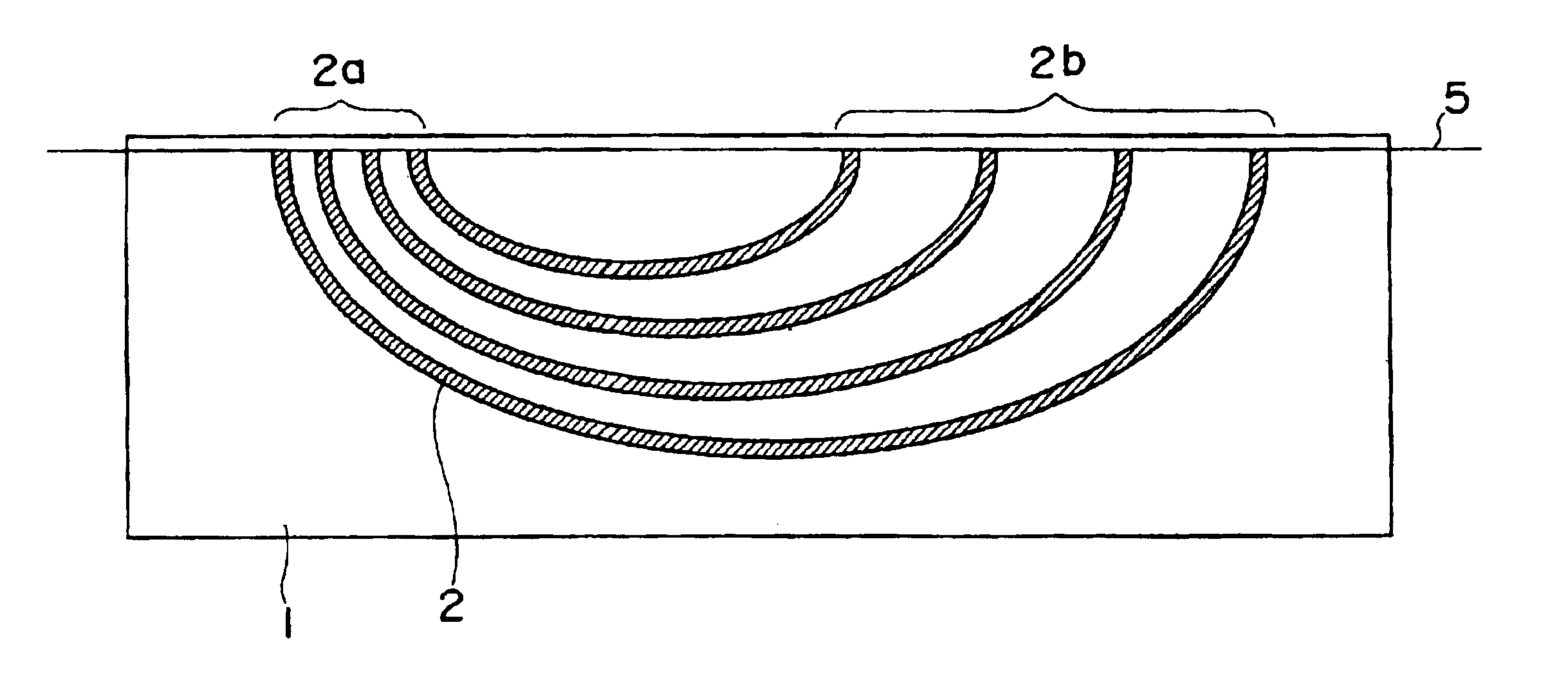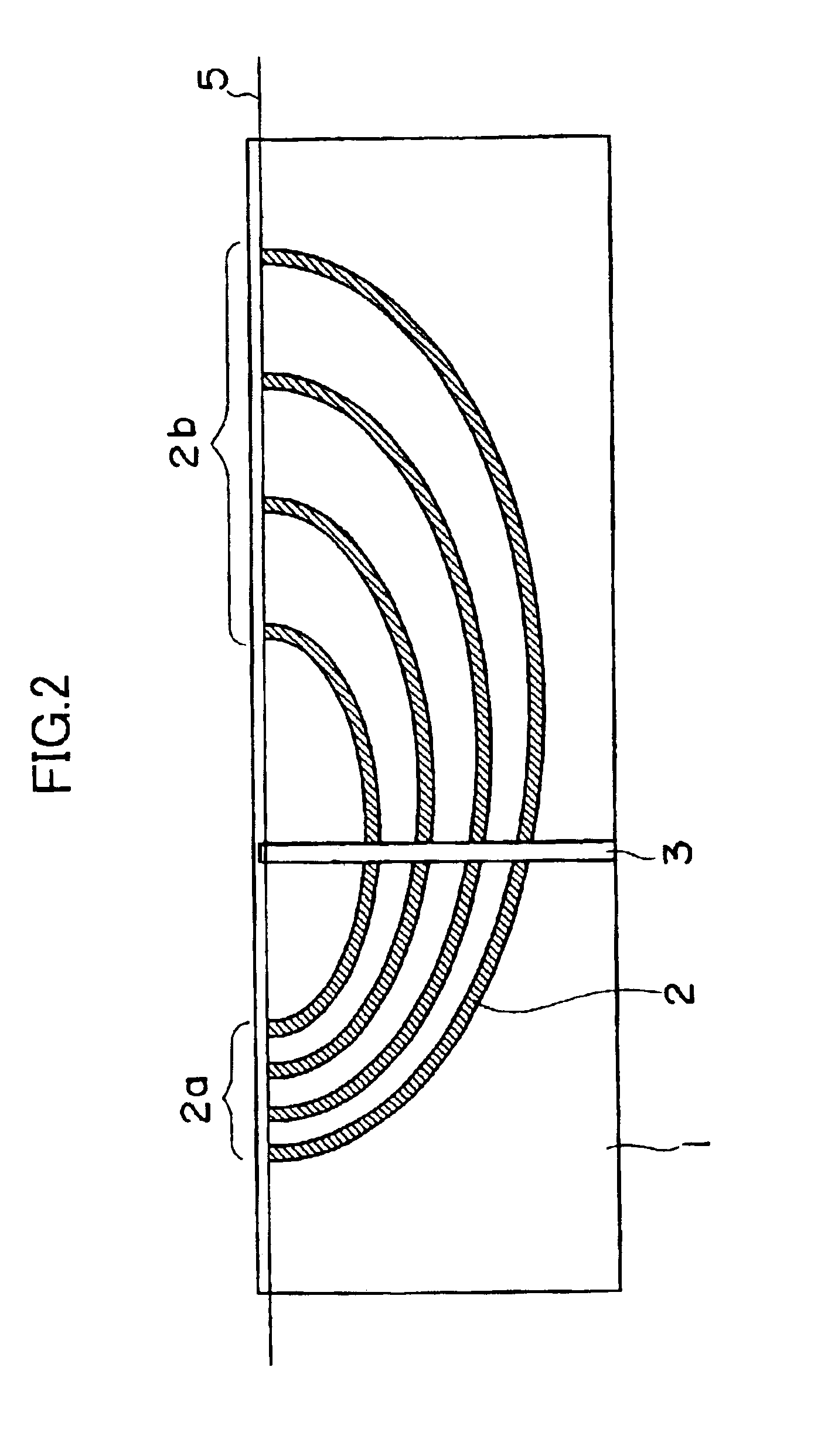Polymer optical waveguide and process for producing the same
a polymer optical waveguide and polymer technology, applied in the field of optical waveguides, can solve the problems of reducing the refractive index the precision of the obtained core diameter, and the insufficient difference between so as to achieve the effect of the cladding layer, and reducing the loss of the cor
- Summary
- Abstract
- Description
- Claims
- Application Information
AI Technical Summary
Benefits of technology
Problems solved by technology
Method used
Image
Examples
example 1
[0118]After a thick resist (SU-8: manufactured by MicroChem Corp.) was coated on the surface of a Si substrate (diameter 6 inch) by a spin coating method, the substrate having the resist thereon was pre-baked at 80° C., irradiated with the light through a photomask, and developed to form a convex portion. Then, this was post-baked at 120° C., to prepare a master template for forming a core part of an optical waveguide having a branched concave portion. This optical waveguide is branched at 1:4 and, as shown in FIG. 3, has such a shape that a start point and an end point of a waveguide are aligned on the same straight line. A sectional-shape of a branched end is a regular square of 50 μm square, a length of a curved line part before and after branching is about 7.5 mm and they are arrayed at an interval of 250 μm at the end. In addition, a maximum width of a mixing part was 200 μm, lengths thereof were, in order from a shorter core part after branching, 19.75 mm, 20.00 mm, 20.25 mm a...
example 2
[0125]According to the same manner as that of Example 1, a master template for forming a core which has a cross-section of the regular square of 50 μm square was prepared. This core part structure has non-branched four waveguides and, as shown in FIG. 2, has a shape that a start point and an end point of a waveguide are aligned on the same straight line. A length of a waveguide is about 100 mm, and waveguides are arranged at a pitch of 250 μm.
[0126]A SUS plate having a thickness of 50 μm, on which a releasing agent was coated, was fixed at a position dividing a convex portion into approximately two parts in a longitudinal direction so as to cross the convex portion corresponding to the above 4 core parts. The plate was fixed not to be inclined. A releasing agent was coated on the whole and, thereafter, the PDMS resin used in Example 1 was poured. The resin was solidified by heating at 120° C. for 30 minutes, and removed to prepare a mold of a thickness of 3 mm having a concave porti...
example 3
[0133]A flexible polymer optical waveguide was prepared according to the same manner as that of Example 2 except that a resin inlet was not provided on an upper portion of a mold as in FIG. 1 and a core part was formed by utilizing a part corresponding to a start point of a waveguide as a resin inlet and a part corresponding to an end point as a resin outlet.
[0134]Upon this, a time for filling the ultraviolet ray-curable resin into the whole area of a concave portion of a mold was 30 minutes. In addition, the waveguiding loss of a polymer optical waveguide was 0.35 to 0.38 dB / cm.
PUM
| Property | Measurement | Unit |
|---|---|---|
| refractive index | aaaaa | aaaaa |
| surface energy | aaaaa | aaaaa |
| RMS) roughness | aaaaa | aaaaa |
Abstract
Description
Claims
Application Information
 Login to View More
Login to View More - R&D
- Intellectual Property
- Life Sciences
- Materials
- Tech Scout
- Unparalleled Data Quality
- Higher Quality Content
- 60% Fewer Hallucinations
Browse by: Latest US Patents, China's latest patents, Technical Efficacy Thesaurus, Application Domain, Technology Topic, Popular Technical Reports.
© 2025 PatSnap. All rights reserved.Legal|Privacy policy|Modern Slavery Act Transparency Statement|Sitemap|About US| Contact US: help@patsnap.com



